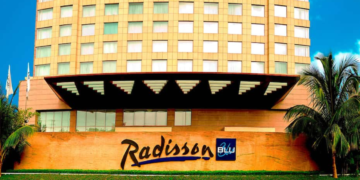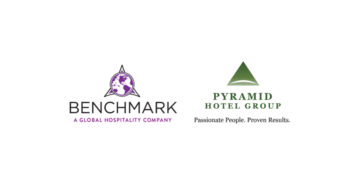Revenue Management is key to attaining Profitability in tour Hotel Management and this is further explained by the opinions of Massimiliano Terzulli through the use of profitability ratios.
“As a hotelier, you know that generating profitable earnings is the key to a successful hotel. However, understanding your profitability ratios isn’t always straightforward because you may not have all the information you need to understand your hotel’s ROI or ROE. Other profitability ratios may give you the insights you need to produce the biggest profits. Read on to discover the critical revenue management practice that grows hotel profits.” these are the opinions of industry expert Massimiliano Terzulli.

How to Analyze Three Profitability Ratios
Understanding how profitability ratios work is a helpful step in revenue management Whether you’re a hotel owner, GM, or revenue manager as they provide insights into the overall hotel’s performance, which are especially important for bank loans.
There are three primary profitability ratios we must focus on:- ROI, ROE, and ROS. However, a fourth, EBITDA, gives the best framework to assess your hotel’s profitability using percentages.
Profitability Ratios: The Big Three
Return on Investment (ROI)
Every person who manages or is even familiar with finances or business is familiar with the concept of ROI. the conclusion is to divide your operating income by invested capital and multiply it by 100.
ROI = (Operating Income / Invested Capital) x 100
However, ROI is often subjective based on the owner’s or shareholders’ expectations and therefore Revenue managers focus on market demand and how that impacts room rental pricing.
Return on Equity (ROE)
Return on Equity measures your risk.
Let’s take an example. Is your ROE higher than the return on those government bonds?
ROE = (Annual Net Income / Net Equity) x 100
This is another profitability ratio that tends to be more subjective in nature and cannot alone be considered while making long-term decisions.
“If you want to analyze your hotel’s ROI or ROE, you need a strong understanding of the hotel’s financial position. You’ll need to know how much capital the hotel has invested to reach the optimum ROI percentage point, and you’ll need to know the net equity for ROE. Not everyone has clear access to these types of numbers.
Additionally, such numbers are property specific and don’t give accurate insight when extrapolating across the industry.” explains Massimiliano Terzulli.
Return on Sales (ROS)
Return on Sales measures your hotel’s performance and would help you compare similar size competitors within the same industry.

ROS = (Operating Profit / Net Sales) x 100
The ROS would be a helpful comparison tool for hotel managers because it averages the l profit margin your hotel earns. When hoteliers review the profit margin, it gives core insights into business operations when you compare them to similar or even competitive hotels.
“Consider if your sector has an average profit margin of 10%, yet your hotel shows a ROS ratio of 4%. That raises red flags that there are gaps in your hotel operations and room for improvement. You could review product pricing, sales channels, or production costs to discover those gaps from a revenue management perspective.
As revenue managers, the Franco Grasso Revenue Team (FGRT) recognizes that ROS (Return on Sale) accurately measures your hotel’s profitability. ROS focuses on maximizing revenue through maximizing sales and profit. However, a better representation is another metric for hoteliers to use for analyzing profitability.” Massimiliano Terzulli added further.
ROS vs. EBITDAR/EBITDA
Compare ROS to EBITDAR (Earnings Before Interest, Taxes, Depreciation, Amortization, Restructuring or Rent costs), more broadly known as Gross Operating Profit (GOP), and EBITDA (Earnings Before Interest, Taxes, Depreciation, and Amortization), the same as EBITDAR but after deducting rent costs (in case the property is not owned and pays a rent).
EBITDA indicates how much money is available to handle costs like interest, taxes, etc., and still leave a profit margin. In general, the healthiest and most profitable businesses have higher EBITDA, while a low or negative EBITDA suggests operating costs are more than revenues which is not sustainable for the concerned business.
EBITDA is essential because it gives a big picture view of a business’s health through daily operations rather than clever accounting practices which can obscure the reality of operations.
In summary: EBITDA = Revenue – Expenses (excluding tax, interest, depreciation, and amortization)
Hoteliers can forecast EBITDA or calculate it based on a hotel’s balance sheet.
“There’s a myth that revenue management increases variable costs due to greater occupancy and reduces operation margins. In reality, smart revenue management may increase variable costs and revenue at the same time, so profit grows.
For example, imagine a property without revenue management. This hypothetical property earns 500.00 euros a year with variable costs of 150.000 euros (30% of total revenue.) Fixed costs are 200.000 euros (40% of revenue.)
By implementing revenue management, the property increases occupancy and revenue by 25% earning the property 625.000 euros. The fixed costs remain the same, and the variable costs increase by 35% (from 150.000 to 202.500.) However, the variable costs increase is largely offset by the incremental revenue increase (52.500 to 125.000.) This results in a higher EBITDA and higher earnings.”Massimiliano Terzulli explains further in his news opinion.

How Revenue Management through the Pandemic Maintained Profitability
the hotel industry struggled as the world shut down due to the pandemic. However, the FGRT study of over 400 hotels demonstrated that during global crises, revenue management is very critical. Those hotels that adopted revenue management systems still showed growth and positioned themselves to maximize results when demand returned. It is because of Revenue management that these hotels stay the course during the lockdowns and decreased losses. During the 2020 and 2021 shutdowns, many city hotels maintained revenue strategies and broke even or remained profitable despite the pandemic.


























